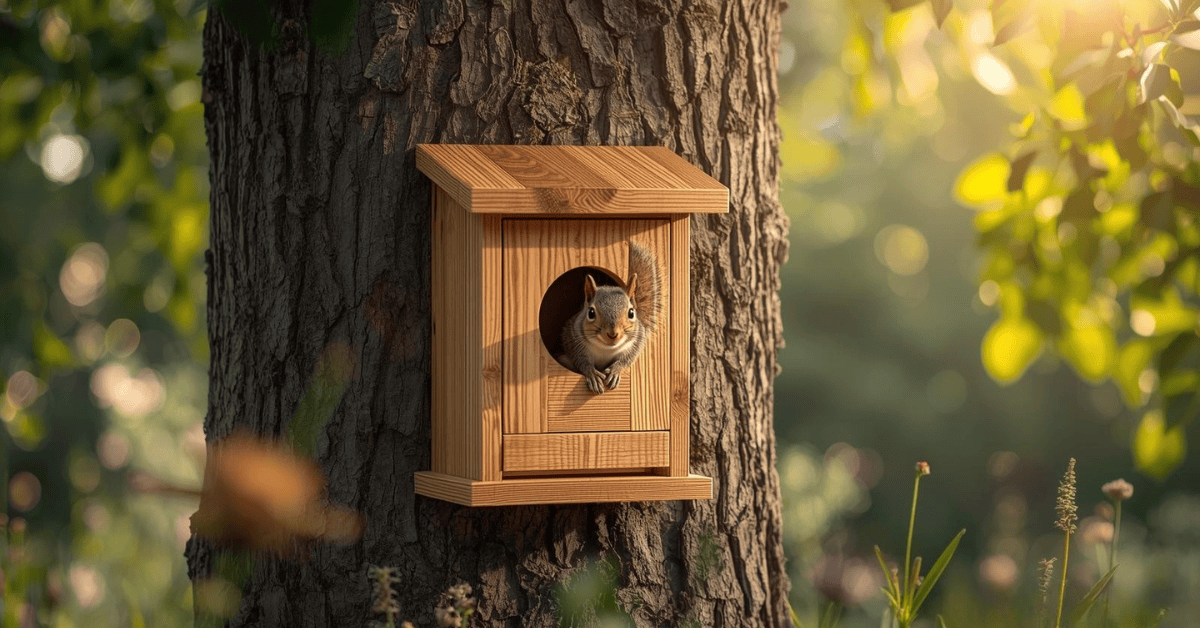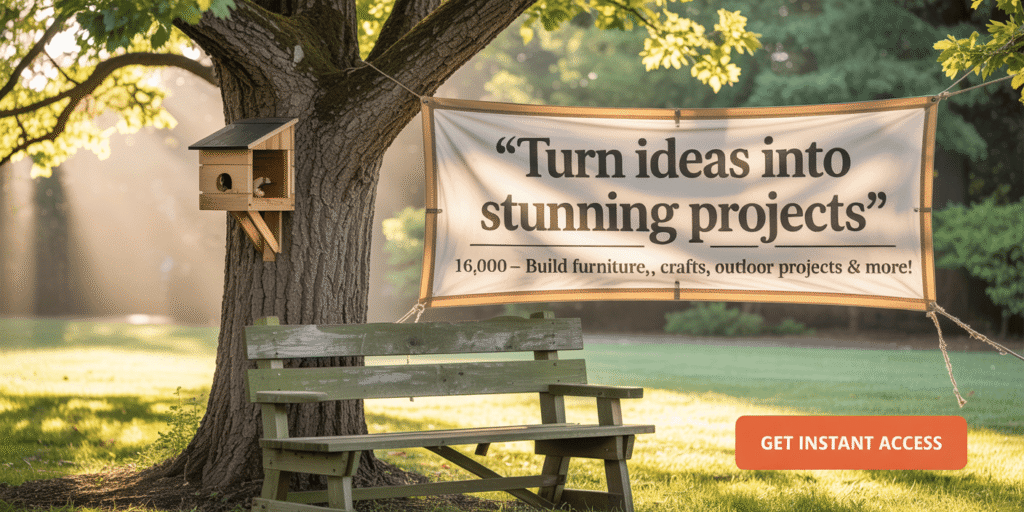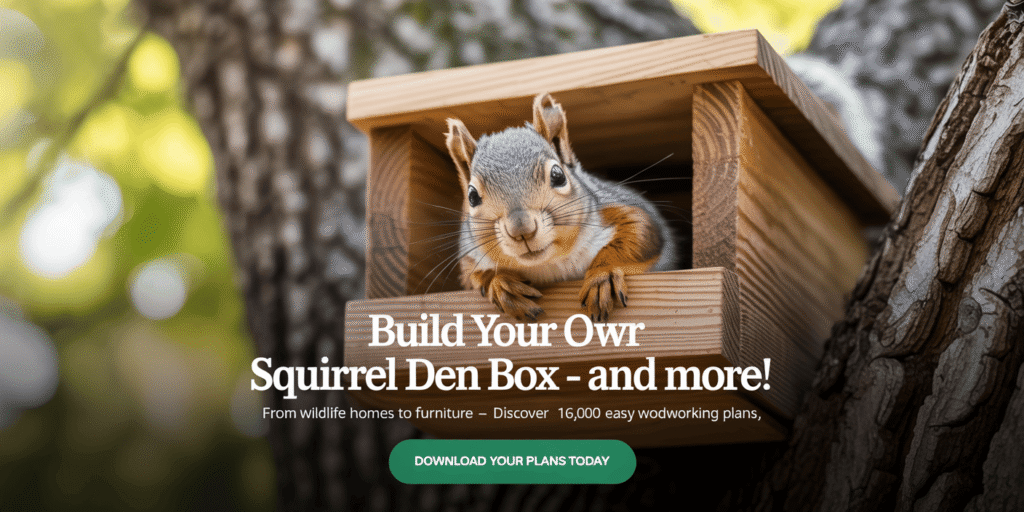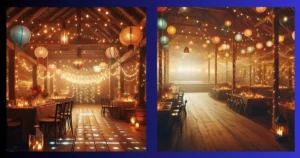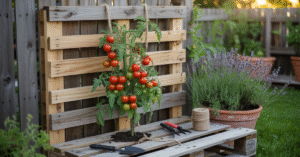Did you know that helping backyard wildlife can really help the environment? Making a DIY wildlife box is a great way to do this. By building a squirrel house, you provide these animals with a warm place to live and help nature remain balanced.
Building a squirrel house is a fun project. It means creating a secure environment that keeps its guests safe from adverse weather conditions and potential predators. With the right squirrel nest box plans, you can make a welcoming spot for squirrels and other animals in your yard.
Key Takeaways
- Create a haven for backyard wildlife
- Boost local biodiversity with a DIY wildlife box
- Use squirrel house blueprints for a sturdy structure
- Protect inhabitants from harsh weather and predators
- Attract squirrels and other wildlife to your backyard
Why Build a Squirrel Nest Box?
Building a squirrel nest box is a simple yet effective way to support local wildlife. It provides a safe and cozy habitat for squirrels. This helps to enhance the biodiversity of your backyard.
Benefits for Local Wildlife
A DIY squirrel house offers many benefits for local wildlife. It gives squirrels a sheltered spot to nest and raise their young. This protects them from harsh weather and predators.
By installing a squirrel den, you’re supporting the local squirrel population. This helps the overall health of your ecosystem.
The benefits of having a squirrel nest box are many. They provide a home for squirrels and encourage them to stay in your yard. This lets you enjoy watching them.
Creating Backyard Biodiversity
Creating a backyard biodiversity haven is easier than you think. Adding a squirrel nest box to your outdoor space is a big step. Squirrels play a vital role in seed dispersal and forest regeneration.
| Benefits | Description |
|---|---|
| Shelter for Squirrels | Provides a safe spot for squirrels to nest and raise their young. |
| Biodiversity Enhancement | Contributes to the overall health of your local ecosystem. |
| Wildlife Support | Supports the local squirrel population and encourages them to stay in your yard. |
By building a squirrel nest box, you’re not only providing a home for squirrels. You’re also supporting backyard wildlife. This simple DIY project can have a big impact on your local environment.
Understanding Squirrel Nesting Behavior

Learning about squirrel nesting behavior is crucial for a successful nest box. Squirrels have certain habits and preferences for their nests. It’s important to replicate these conditions for your homemade squirrel shelter.
Natural Nesting Habits
Squirrels build their nests, called dreys, in trees. They use twigs, leaves, and other materials. These nests are spherical and provide a cozy, safe space for squirrels to rest, hide, and raise their young. It’s key to mimic these natural conditions when building a nest box.
Squirrel Nesting Seasons
The squirrel nesting season changes by region and species. Generally, squirrels breed twice a year, in early spring and late summer. During these times, they seek safe, comfortable places to nest and raise their young. Your squirrel nest box can be a vital haven during these seasons.
Ideal Nesting Conditions
Squirrels like nests that are dry, well-ventilated, and safe from predators. The size of your squirrel nesting box should fit the species you want to attract. A good size is a box that’s 6-8 inches in diameter and 12-18 inches deep. The entrance hole should be about 2.5-3 inches in diameter.
| Nesting Condition | Ideal Specification |
|---|---|
| Box Diameter | 6-8 inches |
| Box Depth | 12-18 inches |
| Entrance Hole Diameter | 2.5-3 inches |
Detailed Squirrel Nest Box Plans for DIY Enthusiasts

Building a squirrel nest box is a fun project. It’s great for all skill levels. You can make a safe spot for squirrels in your backyard.
Basic Single-Chamber Design
The basic single-chamber design is perfect for beginners. It has a simple box with one entrance hole. The inside is cozy for squirrels. Here’s how to make it:
- Cut the wood according to the specified dimensions.
- Assemble the box using nails or screws.
- Add a roof and ensure it’s securely attached.
John Smith, a wildlife expert, says, “A well-designed squirrel nest box is a haven for local wildlife. It provides a safe space for squirrels to nest and raise their young.”
“Squirrels are fascinating creatures, and providing them with a safe haven can be a rewarding experience for DIY enthusiasts.”
Deluxe Multi-Chamber Design
For those with more experience, the deluxe multi-chamber design is a challenge. It has multiple compartments for squirrels to nest and store food.
- Cut additional wood pieces to create separate compartments.
- Assemble the compartments and attach them to the main box.
- Ensure proper ventilation and drainage.
Choosing the Right Plan for Your Skill Level
When picking a squirrel nest box plan, think about your skill level and materials. Beginners should start with simple designs. As you get better, try more complex ones.
By following these tips and choosing the right plan, you can make a welcoming home for squirrels in your backyard.
Materials and Tools You’ll Need

Before starting your squirrel nest box project, make sure you have the right stuff. You need the right materials and tools to build a safe and cozy home for squirrels.
Wood Selection and Specifications
Choose untreated wood that’s strong and won’t rot. Cedar or pine is great because they resist decay well. Your nest box should be 6 inches wide, 6 inches deep, and 12 inches tall. The wood should be at least 3/4 inch thick for good insulation.
Hardware Requirements
You’ll need galvanized or stainless steel screws to avoid rust. You’ll also need a hinge for the roof and a small latch or nail to keep it shut. Don’t use glue because it can’t handle the weather.
Tools Checklist
Here’s what you’ll need for the project:
- Saw (circular or handheld)
- Drill with a screwdriver and drill bits
- Hammer
- Tape measure
- Sandpaper
With the right materials and tools, you’re ready to build a squirrel nest box. It will be a safe place for these wonderful creatures.
Squirrel Nest Box Dimensions and Specifications
To make a good squirrel nest box, you need to get the size and details right. A well-made nest box gives squirrels a safe, cozy place to nest and raise their young.
Optimal Size Requirements
The best size for a squirrel nest box is about 6-8 inches wide, 6-8 inches deep, and 12-18 inches tall. These sizes let squirrels move easily, and the female cares for her babies. It’s best to use high-quality wood like cedar or pine for durability.
Entrance Hole Placement and Size
The entrance hole should be 3-4 inches from the floor to keep predators out. The hole should be 2.5-3 inches in diameter. This size lets squirrels in but keeps out bigger animals.
Ventilation and Drainage Considerations
Good ventilation is key to a healthy nest box. Drill a few small holes near the top for air. Also, make sure the box drains well. A slight slope and small holes at the bottom help keep water out.
Step-by-Step Construction Guide
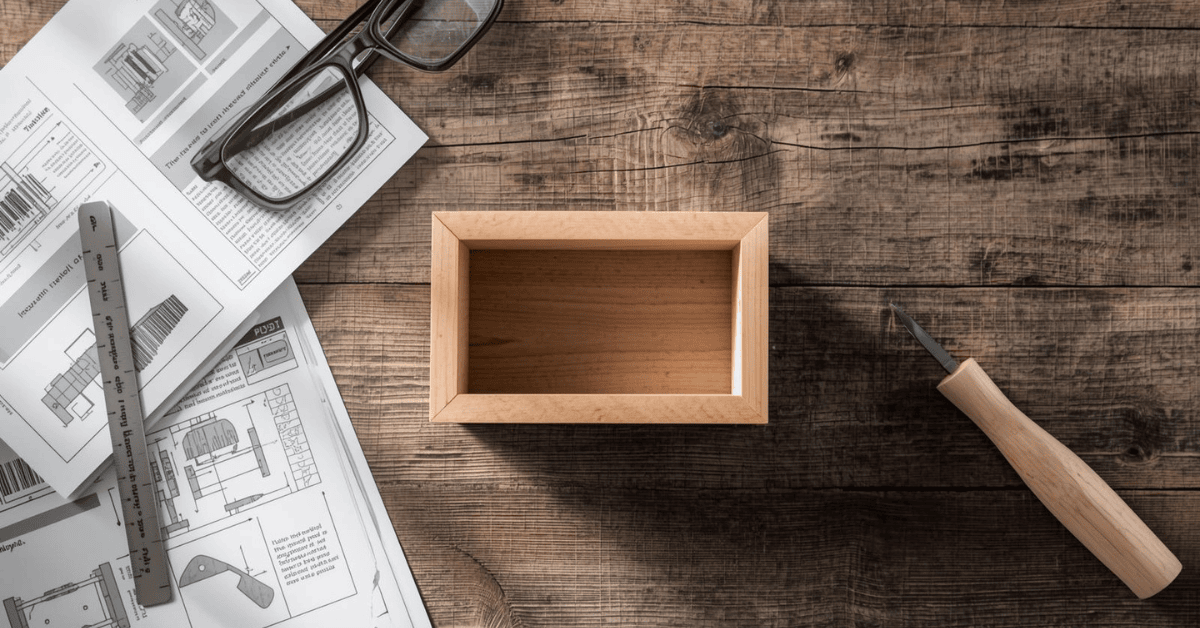
Building a squirrel nest box is a fun project. It starts with getting your materials ready and ends with adding the final touches. This way, you create a cozy home for squirrels in your backyard.
Preparing Your Materials
First, gather all the materials you need. This includes wood, hardware, and tools for cutting and drilling. Use untreated wood to keep the squirrels safe from chemicals.
Cutting the Wood Pieces
Next, cut the wood according to your plan. Make sure it’s accurate so the pieces fit well. Use the right saw or tool for your wood type.
Assembling the Main Box
Start putting the nest box together by attaching the sides and back. Use nails or screws for a strong bond. Ensure the corners are tight and the box is sturdy. This will be where the squirrels nest.
| Component | Dimension | Material |
|---|---|---|
| Back | 12″ x 6″ | 1″ Cedar |
| Sides | 12″ x 3″ | 1″ Cedar |
| Front | 12″ x 6″ | 1″ Cedar |
| Floor | 6″ x 6″ | 1″ Cedar |
| Roof | 6″ x 6″ | 1″ Cedar |
Adding the Roof and Floor
Attach the roof and floor to the main box. Make sure they’re well-fastened. The roof should keep the nest dry, and the floor should support the squirrels.
Creating the Entrance Hole
Drill a hole of about 2.5 inches in diameter at the front. Place it 6 inches from the floor. This hole is where squirrels will enter.
Installing Hardware and Finishing Touches
Install hinges for the roof or a mounting bracket for easy hanging. Add a natural sealant to protect the wood.
By following these steps, you’ll have a squirrel nest box ready for your backyard. It will be a safe place for local squirrels.
Weatherproofing and Predator Protection
Keeping your homemade squirrel shelter safe from harsh weather and predators is key. A good squirrel den plan should protect against many dangers. It must also guard against different weather conditions.
Sealing and Treating the Wood
Sealing and treating the wood is vital for your squirrel nesting box’s life. Use non-toxic, water-resistant materials to keep the wood dry and strong. A water-based sealant or natural oil, like linseed oil, works well.
It’s also wise to follow advice on using safe materials. This keeps the squirrels safe and healthy.
Predator Guards and Baffles
Predator guards and baffles are key to protecting your squirrel nest box. A predator guard around the entrance hole keeps out raccoons, snakes, and others. A baffle below the nest box stops climbing predators.
Weather-Resistant Features
Adding weather-resistant features to your squirrel den plans is important. Make sure the nest box has proper ventilation to avoid heat and moisture. The roof should slope and overhang to keep rain out.
Using strong, weather-resistant materials for the roof and walls also helps. This makes the nest box last longer.
By focusing on these points, you can create a safe and lasting homemade squirrel shelter. It will support backyard wildlife for many years.
Proper Placement of Your Squirrel Nest Box
Supporting backyard wildlife support starts with where you put your squirrel nest box. The right spot can really help attract squirrels and keep them safe.
Height and Location Considerations
How high you hang your squirrel nest box matters a lot. It should be 10 to 30 feet off the ground to keep predators away. Also, put it near a tree with a clear path for squirrels to fly to and from.
Direction and Exposure Factors
The direction your squirrel nest box faces is important, too. A box facing east or southeast gets warm in cold months. But it should avoid direct sunlight on hot days to stay cool. Think about the natural shelter from trees or leaves.
Mounting Methods and Security
It’s crucial to secure your squirrel nest box well, so it stays put, even in bad weather. Use strong materials and think about adding a predator guard to keep out raccoons, cats, and other threats. Check it often to spot any problems early.
By thinking about these things, you can make your backyard a great place for squirrels. This helps local wildlife during the squirrel nesting season and all year round.
Common Mistakes to Avoid When Building Squirrel Houses
Building a squirrel nest box needs careful attention and knowledge of common mistakes. It’s key to focus on design, installation, and upkeep to make a squirrel-friendly environment.
Design Flaws That Deter Squirrels
A bad design can keep squirrels away. Common issues include:
- Insufficient ventilation, leading to overheating
- Inadequate drainage, causing water accumulation
- Entrance holes that are too small or too large
To sidestep these errors, use free squirrel nesting box designs or squirrel house blueprints with the right specs.
Installation Errors
Even with a good design, wrong installation can fail. Common mistakes include:
- Installing the box too low or too high
- Orienting the box in a direction that doesn’t provide adequate shelter
- Failing to secure the box properly
To install correctly, follow How to build a squirrel nest box guides. Think about height, direction, and shelter.
Maintenance Oversights
Regular upkeep is key to your squirrel nest box’s life. Common mistakes include:
- Failing to clean the box regularly
- Not inspecting the box for damage or wear
- Neglecting to repair or replace the box as needed
By watching out for these oversights, you can make a DIY wildlife box safe for squirrels.
🚀 Ready to Take Your Woodcrafting Skills to the Next Level?
Building a simple squirrel nest box is just the start — imagine having 16,000+ step-by-step woodworking plans at your fingertips. From birdhouses to benches, coffee tables to cabins… every project you’ve ever dreamed of is already mapped out for you.
With Ted’s Woodworking, you’ll enjoy:
✅ 16,000+ Done-for-You Projects – Clear blueprints & step-by-step guides for every skill level
✅ Exact Cutting & Materials Lists – No more wasted wood, time, or money
✅ Detailed 3D Schematics & Multi-Angle Views – Build with 100% confidence
✅ Perfect for Beginners & Pros Alike – Start small or tackle advanced builds at your own pace
✅ Free Monthly Plans for Life – Fresh ideas delivered to you forever
✅ Exclusive Bonuses – CAD viewer, 150 video tutorials, woodworking guides & more
💡 For the cost of a single fancy dinner ($67 one-time only), you’ll unlock a lifetime of projects, ideas, and woodworking joy.
👉 Click Here to Grab Your Copy of Ted’s Woodworking Now
⚡ Don’t miss out — this special offer ends soon. Start your next project today!
Conclusion
By following the squirrel nest box plans in this article, you can make a safe home for backyard squirrels. Building a DIY squirrel house helps local wildlife and makes your outdoor space better.
It’s important to provide a shelter for squirrels. Building your own nesting box is easy. With the right materials and some DIY skills, you can make a cozy home for them.
As you build your squirrel nest box, you help your local ecosystem. Supporting backyard wildlife means squirrels have a place to thrive.
FAQ
What is the ideal size for a squirrel nest box?
A good squirrel nest box is 6-8 inches tall and 4-6 inches wide. It should be 6-8 inches deep. The entrance hole should be 2.5-3 inches in diameter.
What type of wood is best for building a squirrel nest box?
Cedar, pine, or cypress wood works well. They are durable and resist rot and insects.
How do I weatherproof my squirrel nest box?
Use a waterproof sealant like silicone or polyurethane on the outside. Also, cover it with waterproof roofing material.
How high should I install my squirrel nest box?
Install it 10-20 feet up. Choose a spot with partial shade and away from strong winds.
What are some common mistakes to avoid when building a squirrel nest box?
Avoid using the wrong wood. Don’t forget ventilation. And always add a predator guard.
Can I use a pre-made nest box instead of building one?
Yes, pre-made boxes work too. But building one lets you tailor it and use the right materials.
How do I clean and maintain my squirrel nest box?
Clean it every year. Remove debris, check for damage, and fix any issues.
What are the benefits of providing a squirrel nest box?
Nest boxes support local wildlife. They add to backyard diversity. And they give squirrels a safe place to nest and raise their young.
Can I build a squirrel nest box with a multi-chamber design?
Yes, multi-chamber designs offer more space. They’re great for squirrels to nest and store food.
How do I choose the right plan for my squirrel nest box?
Pick a plan based on your skill, available materials, and local squirrel needs.
